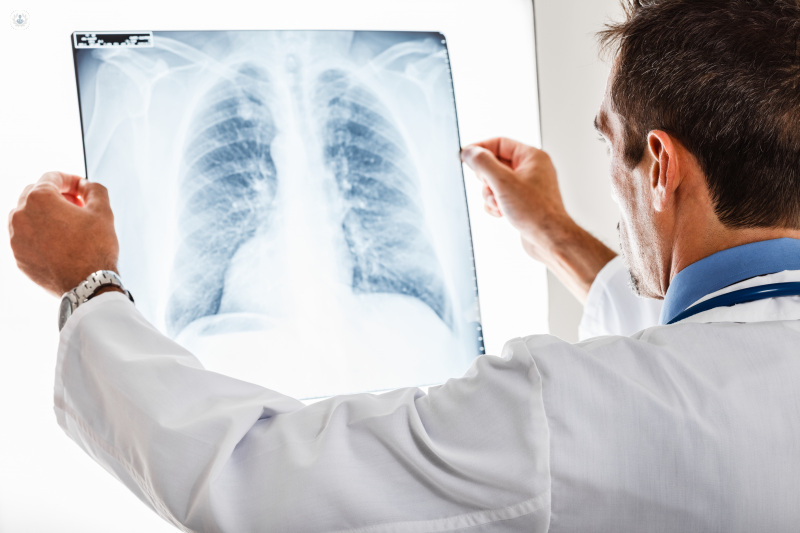Fractured ribs
Mr Marco Scarci - Cardiothoracic surgery
Created on: 11-02-2015
Updated on: 03-21-2023
Edited by: Carlota Pano
What is a fractured rib?
A fractured rib is when one or more of the bones that form part of the rib cage break or crack. Sometimes, the fracture can be really evident while other times, it is more subtle. After a serious trauma, patients can also develop a condition called flail chest. In this situation, there is a paradoxical movement of the rib cage that is in the opposite way as the normal chest. Patients experience significant pain, and very often, difficulty breathing.
Fractures of the ribs tend to heal on their own most of the time, but sometimes they don't, and patients develop a very painful condition called mal-union or incomplete healing of the rib. It is possible for several months, or even years, to pass before this problem is correctly addressed. The result is that patients tend to reduce their physical activity, affecting their lifestyle and sometimes, their work as well.

What are the symptoms of a rib fracture?
This type of injury can be very painful. The most common symptoms are:
- Pain when exerting pressure on the area of the sternum/breastbone
- Pain when breathing or moving in certain positions
- Pain when laughing or coughing
- Headaches
- Muscular discomfort in the area, muscle spasms and even - over a long period of time - incorrect posture
- Tiredness and difficulty moving
- Temporary insomnia
What causes a rib to fracture?
The main causes of rib fractures are injuries or blows to the ribs that can occur due to a traffic accident, a strong punch, and with certain contact sports, such as rugby. It could also be due to repeated movements like rowing or swinging a golf club, and from a very strong cough, especially if the person has weak bones due to cancer that has spread to the bones or osteoporosis.
How is a rib fracture diagnosed?
The doctor will examine the area of the rib cage that hurts and listen to the lungs as the patient inhales and exhales. If a fracture is suspected, an x-ray and a CT scan can show if a fracture is present. A very useful tool is a special CT scan with 3D chest wall reconstruction that creates a three-dimensional model of the chest. This is very useful to diagnose the condition and plan for potential surgery.
How is a fractured rib treated?
It can take broken ribs between two and six months to fully recover. If the fracture has not affected any organ, then the following steps will be advised to help with recovery:
- Taking a break from sports and resting the affected area
- Applying ice and cold packs to the rib or ribs affected
- Taking pain medicine to relieve discomfort and inflammation
- Practising deep breathing to regain strength and to avoid a lung infection
If any internal organs have been injured, such as a punctured lung, then additional treatment and surgery may be needed. Similarly, if the rib edges are severely displaced, surgery to fix them is recommended.
In the case of minor injuries in older patients, surgery should also be considered. This category of patients has very little functional reserve, and thus, a trauma can put those at risk of severe deterioration. Often, patients and relatives are scared by the prospect of having an operation, but this surgery is very safe and can save problems in the long run.
What does surgery consist of?
Surgery consists of making a small cut on top of the fracture(s) and then gently retracting the muscles to expose the bones underneath. At that point, the edges of the broken ribs are realigned into the correct position and further stabilised using titanium plagues. These are very thin and small and don't cause any problem in the long term, don't need removal, and make the bone much stronger than before surgery. The advantage is that pain goes away almost immediately and recovery is much faster. This surgery is very safe, because it is done outside the chest - if there are no associated lung or pleural cavity (the space between the lung and the rib cage) - and requires only a small cut.






